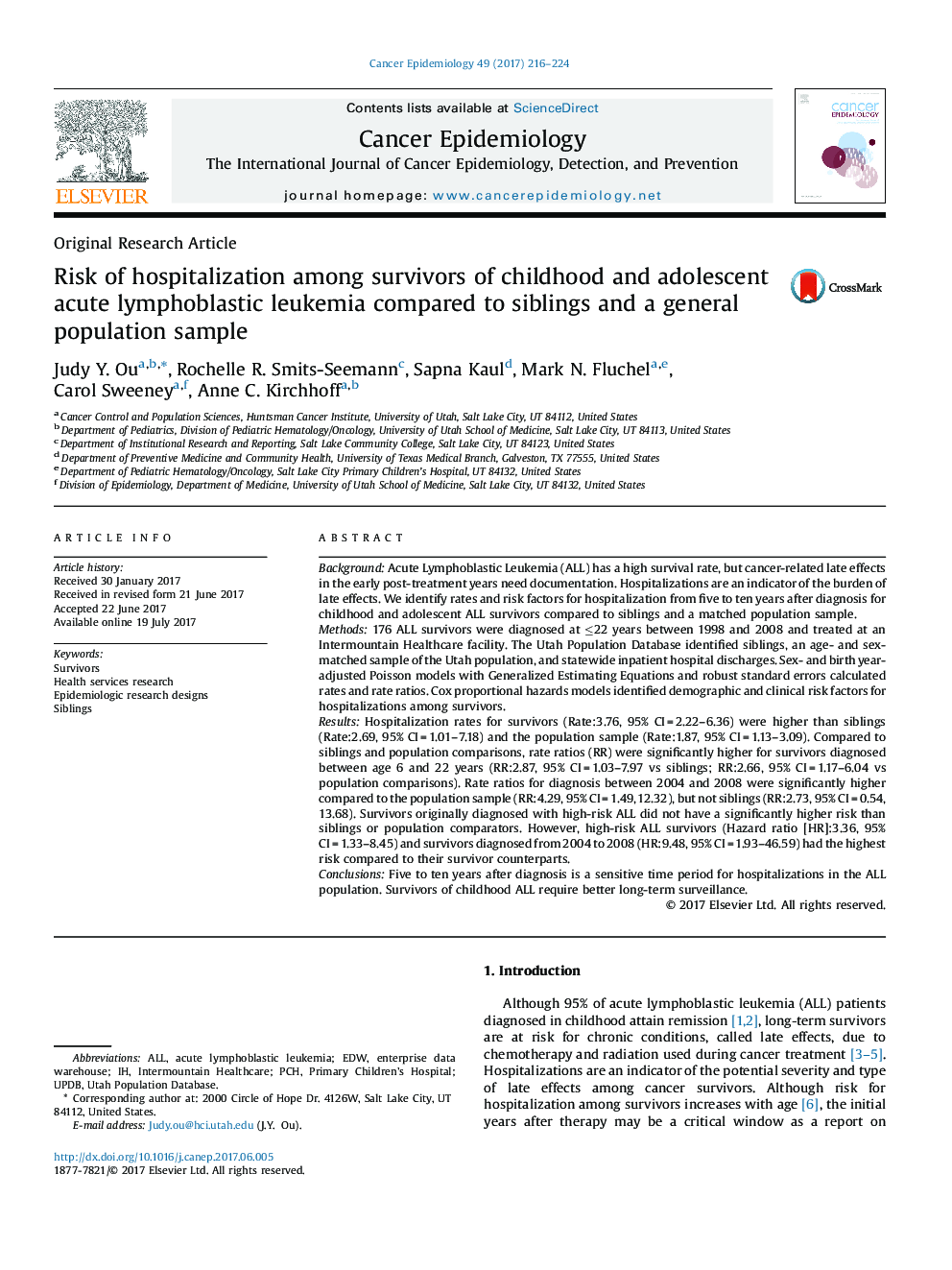| کد مقاله | کد نشریه | سال انتشار | مقاله انگلیسی | نسخه تمام متن |
|---|---|---|---|---|
| 5524780 | 1546526 | 2017 | 9 صفحه PDF | دانلود رایگان |
- We present rates and risk factors for hospitalization among pediatric and adolescent ALL survivors.
- Hospitalization rates are generally higher among survivors than their siblings and a general population sample.
- Preventative care should focus on survivors who were diagnosed between 2004 and 2008, and who were high risk at diagnosis.
BackgroundAcute Lymphoblastic Leukemia (ALL) has a high survival rate, but cancer-related late effects in the early post-treatment years need documentation. Hospitalizations are an indicator of the burden of late effects. We identify rates and risk factors for hospitalization from five to ten years after diagnosis for childhood and adolescent ALL survivors compared to siblings and a matched population sample.Methods176 ALL survivors were diagnosed at â¤22 years between 1998 and 2008 and treated at an Intermountain Healthcare facility. The Utah Population Database identified siblings, an age- and sex-matched sample of the Utah population, and statewide inpatient hospital discharges. Sex- and birth year-adjusted Poisson models with Generalized Estimating Equations and robust standard errors calculated rates and rate ratios. Cox proportional hazards models identified demographic and clinical risk factors for hospitalizations among survivors.ResultsHospitalization rates for survivors (Rate:3.76, 95% CI = 2.22-6.36) were higher than siblings (Rate:2.69, 95% CI = 1.01-7.18) and the population sample (Rate:1.87, 95% CI = 1.13-3.09). Compared to siblings and population comparisons, rate ratios (RR) were significantly higher for survivors diagnosed between age 6 and 22 years (RR:2.87, 95% CI = 1.03-7.97 vs siblings; RR:2.66, 95% CI = 1.17-6.04 vs population comparisons). Rate ratios for diagnosis between 2004 and 2008 were significantly higher compared to the population sample (RR:4.29, 95% CI = 1.49, 12.32), but not siblings (RR:2.73, 95% CI = 0.54, 13.68). Survivors originally diagnosed with high-risk ALL did not have a significantly higher risk than siblings or population comparators. However, high-risk ALL survivors (Hazard ratio [HR]:3.36, 95% CI = 1.33-8.45) and survivors diagnosed from 2004 to 2008 (HR:9.48, 95% CI = 1.93-46.59) had the highest risk compared to their survivor counterparts.ConclusionsFive to ten years after diagnosis is a sensitive time period for hospitalizations in the ALL population. Survivors of childhood ALL require better long-term surveillance.
Journal: Cancer Epidemiology - Volume 49, August 2017, Pages 216-224
